Living in the ocean is not easy. Marine animals face challenges every day–from evading predators to searching for food, the obstacles never stop. One particularly challenging ocean environment to live in: the intertidal zone.
Love ocean content?
Enter your email and never miss an update
document.addEventListener(‘DOMContentLoaded’, function() {
const form = document.getElementById(’email-signup-64c2dad9cae46′);
form.querySelector(‘.rsform__field–email’).addEventListener(“nb:result”, e => {
const nbStatus = form.querySelector(“[name=”nb_email_status”]”);
const nbDate = form.querySelector(“[name=”nb_validation_date”]”);
const tokenField = form.querySelector(“[name=”token”]”);
const currentDate = new Date();
nbStatus.value = e.detail.result.response.status;
nbDate.value = currentDate.toISOString().split(‘T’)[0];
grecaptcha.enterprise.ready(async () => {
const token = await grecaptcha.enterprise.execute(‘6Lcmr3shAAAAAAVRlvJrsUufEEQuItzNDlkpmB2g’, {action: ‘verify’});
tokenField.value = token;
});
});
});
<!– –>
Intertidal zones are part of the ocean’s littoral zones, which are areas that experience the effects of tides and currents close to shore. Intertidal zones, as you might expect, are formed by the rising and falling of ocean tides. These tides are constantly changing as they are pulled by the gravitational forces of the sun and the moon. As the tides ebb and flow, some animals that live in this zone need to be able to adapt to wet and dry conditions (that’s like living in the rainforest in the morning and the desert in the evening. Wild!)
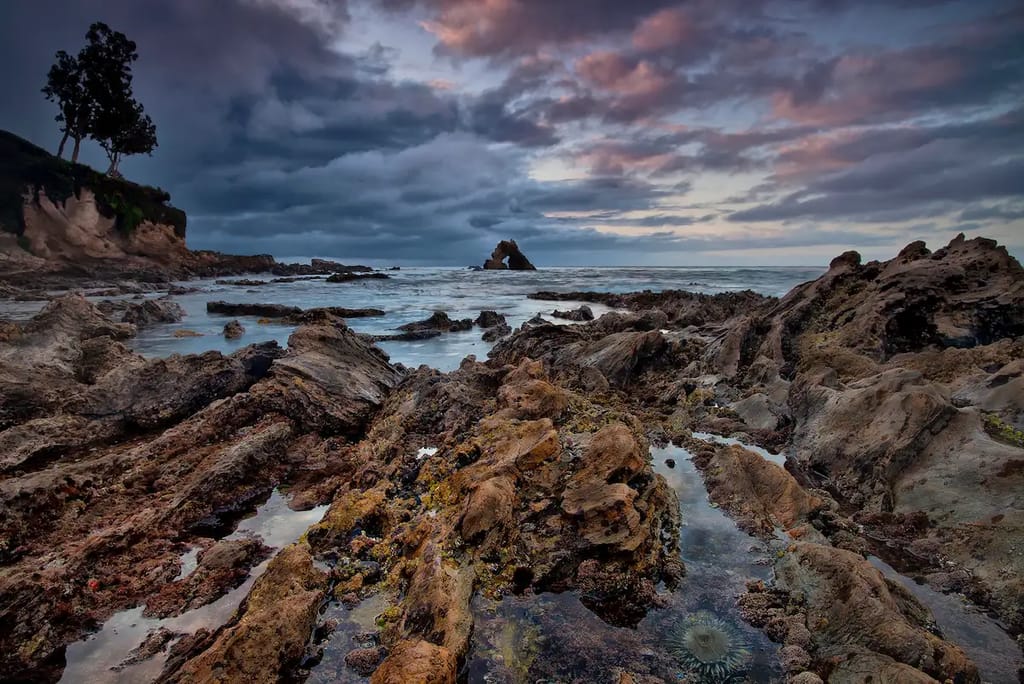
if(typeof window.oc_media_credits === ‘undefined’) {
window.oc_media_credits = {};
}
window.oc_media_credits[69797] = “Craig Ring”;
Low tide can mean the animals must face the sun’s heat, accidental strandings in tide pools and predation from sea birds. High tide means they must withstand fierce waves crashing and salty ocean water. Within the intertidal zone there are four areas where different animals live, including the spray zone, the high tide zone, the middle tide zone and the low tide zone. Each zone has different water coverage and exposure to dry conditions, and some animals have a preference as to where they live within this hazardous yet amazing ocean environment.
This area, where the sea meets the land, is home to many sea creatures despite its challenging conditions. Ready to meet some inhabitants of the intertidal zone? Dive in for five animals that live in this gnarly environment.
Sea Stars
One of the most recognizable creatures of all in the ocean is the sea star. This creature is famous for its unique shape and its appearances in Bikini Bottom, the undersea city where SpongeBob Squarepants and his friends live. To survive in this environment, sea stars hang onto rocks using their tube feet, clinging onto surfaces like a suction cup (hence why they can resist the oncoming waves). Interestingly, sea stars are actually a force to be reckoned with in the low tide zone. These animals are predators and actively hunt for clams or mussels within this environment, again using their tube feet to extract their prey from their respective shells.
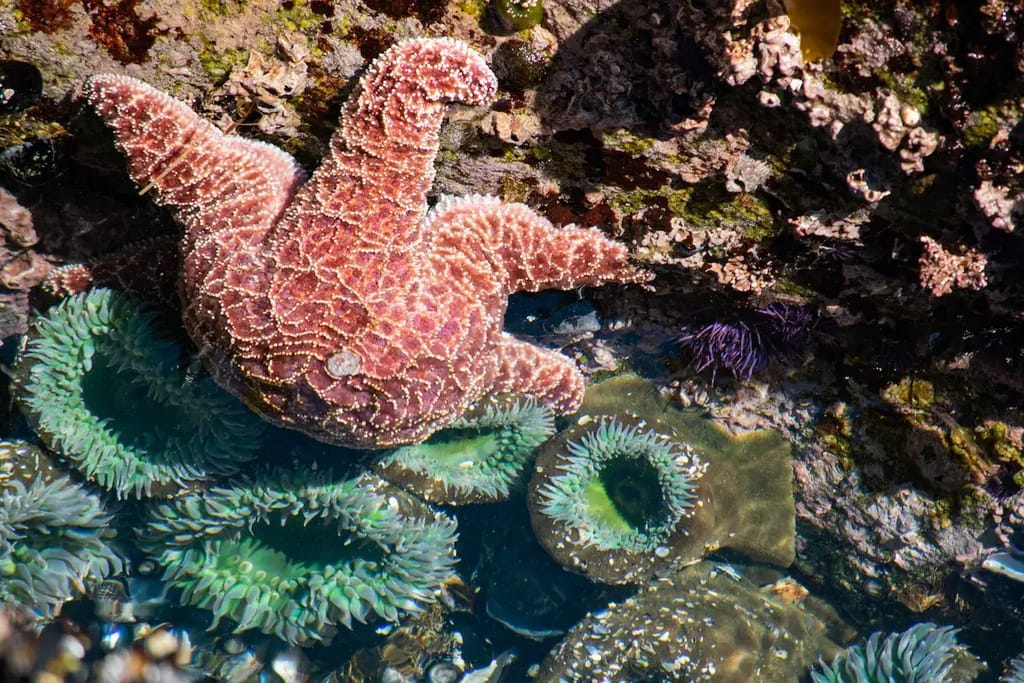
if(typeof window.oc_media_credits === ‘undefined’) {
window.oc_media_credits = {};
}
window.oc_media_credits[69778] = “Bonny Puckett”;
Sea Urchins
These ocean animals are commonly found within the low and middle tide zones. These colorful creatures also have tube feet that allow them to hang onto a variety of tricky surfaces other species would have an issue with. While the tide is low, sea urchins are typically found scraping algae off the rocky surfaces. As consumers of algae, sea urchins play a vital role in keeping algae levels low and maintaining a healthy ocean environment.
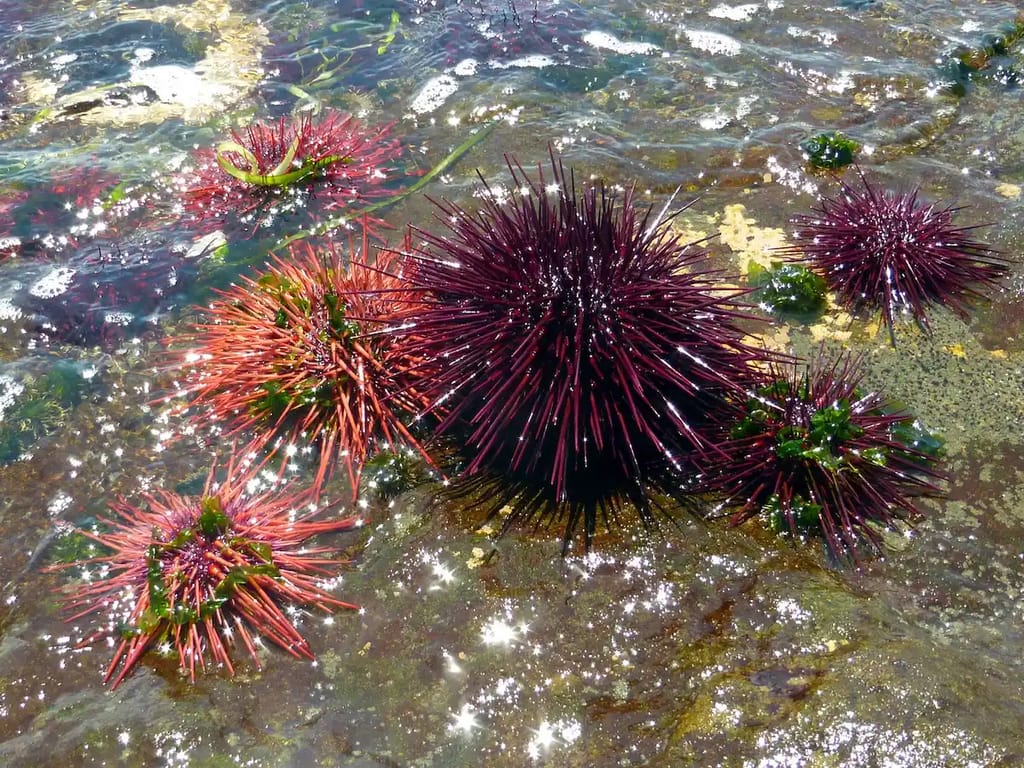
if(typeof window.oc_media_credits === ‘undefined’) {
window.oc_media_credits = {};
}
window.oc_media_credits[69779] = “Shari Green/flickr”;
Crabs
Many kinds of crabs inhabit the intertidal zone. They typically live in the middle to high tide zones where there are many food options for them to choose from. Their prey typically includes barnacles and small fish, both of which can be found in these zones. One such crab in the intertidal zone is the hermit crab, known for its fascinating shell exchanges. These crabs also take advantage of this habitat’s abundant selection of small prey. As the tide goes out, crabs tend to scamper into the crevices of the rocky environment seeking shelter from the heat, protection from sea birds and water to maintain their moisture.
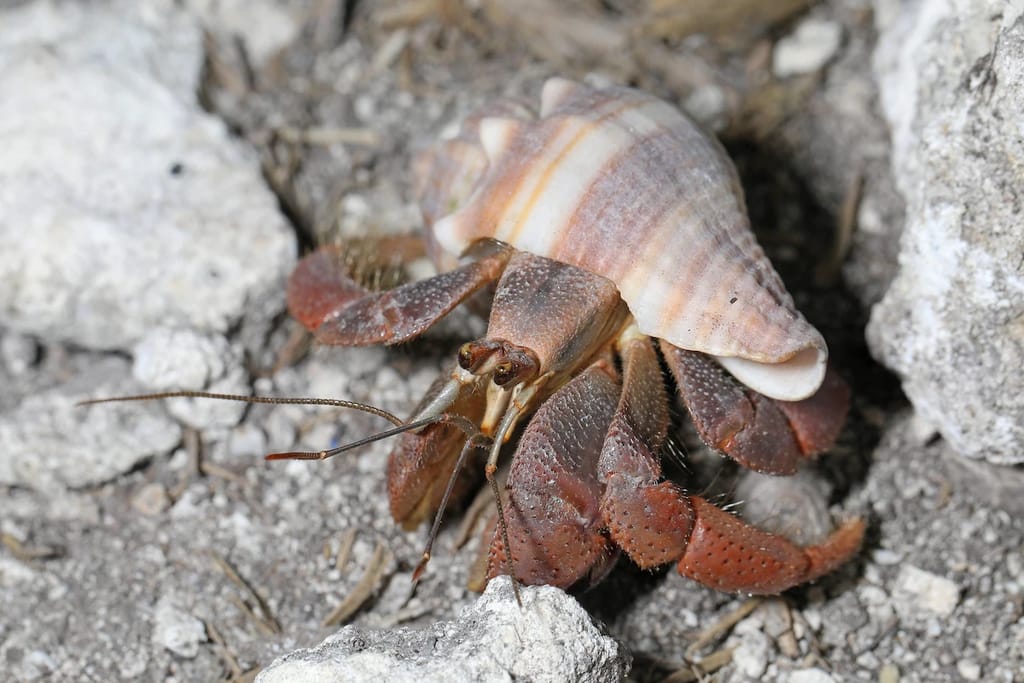
if(typeof window.oc_media_credits === ‘undefined’) {
window.oc_media_credits = {};
}
window.oc_media_credits[69780] = “Judy Gallagher/flickr”;
Anemone
Another iconic creature of the intertidal zone is the anemone. Living primarily in the low to middle tide zones, anemones are fascinating examples of an adaptive animal. While underwater, this animal uses their tentacles to sting and paralyze their prey. Their diet includes small crabs, plankton and fish. Anemones wait for their prey to be washed in by the tides and essentially use these waves to bring their meals to their doorstep (basically a meal delivery service of the sea).
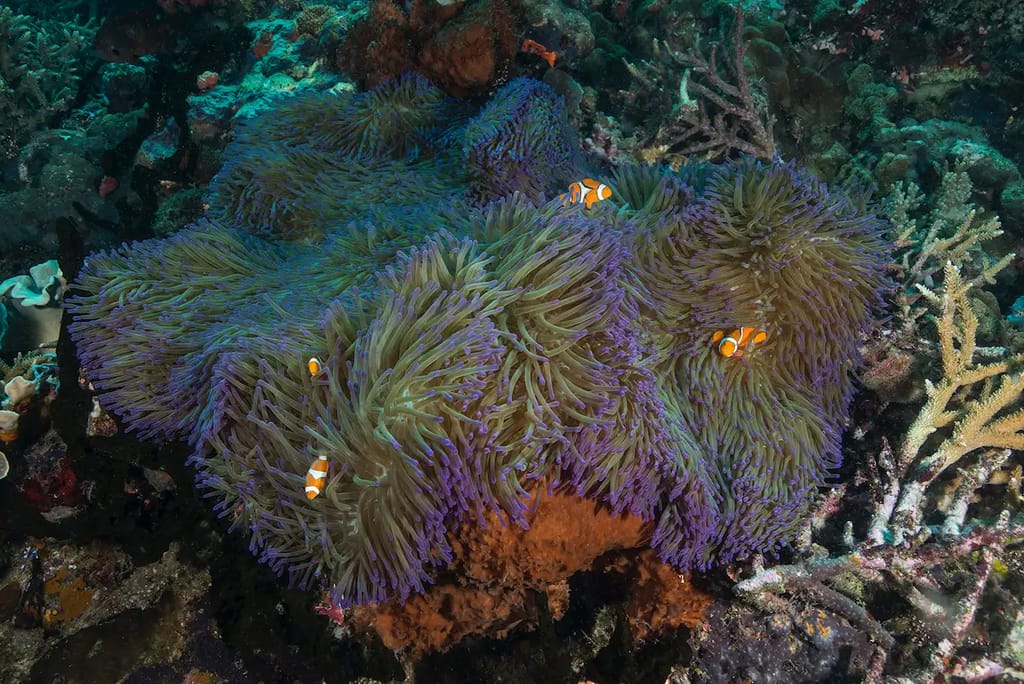
if(typeof window.oc_media_credits === ‘undefined’) {
window.oc_media_credits = {};
}
window.oc_media_credits[69794] = “Amanda Cotton/Ocean Image Bank”;
Barnacles
Barnacles are other inhabitants of the crazy intertidal zone. In fact, barnacles live in the most intense intertidal zone, the high tide zone. In this area, creatures are out of water for long periods of time and can endure strong waves. To survive these conditions, this animal uses its special “glue” to attach itself to the rocky walls of the shore. Once attached, these barnacles will stay for most of their lives, filter feeding as the tides come in to collect nutrients and sealing tightly to maintain their moisture when the tide recedes.
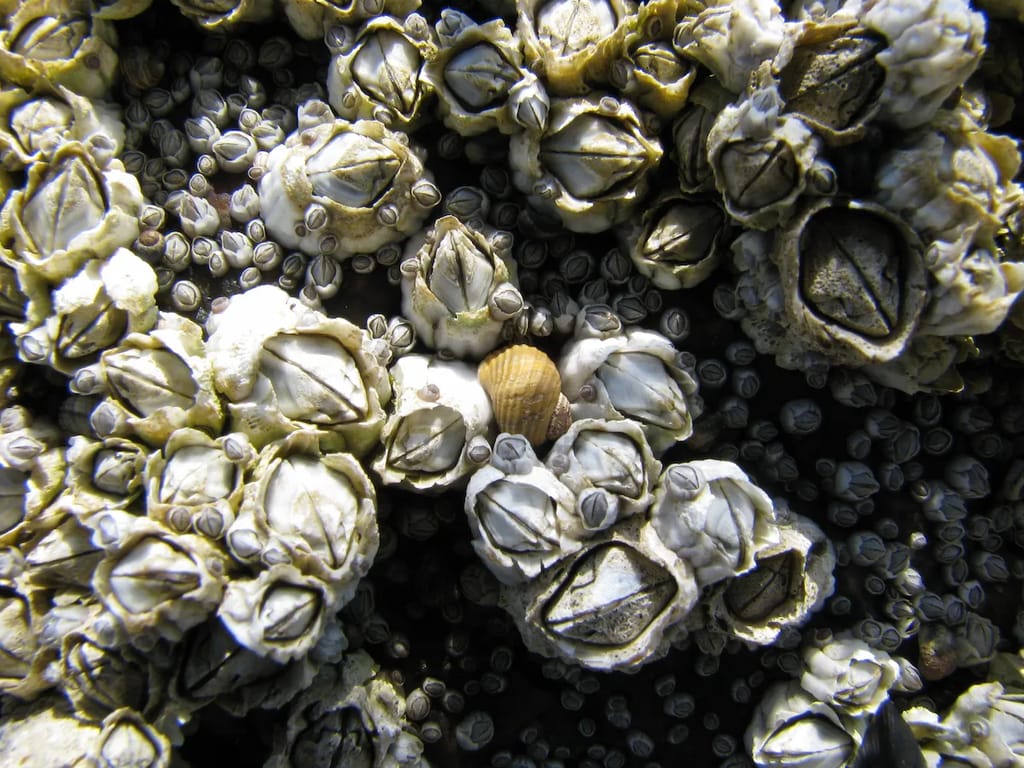
if(typeof window.oc_media_credits === ‘undefined’) {
window.oc_media_credits = {};
}
window.oc_media_credits[69784] = “Olivia V. Ambrogio”;
How Can You Help?
As rough as the creatures living in the intertidal zone have it, this place is still their home. Unfortunately, their home is not safe from human impacts as coastline populations increase and more people make their way to the beach. However, there are ways you can ensure you don’t harm this habitat the next time you’re at the beach. Watch your step and ensure you don’t accidentally step on a fragile inhabitant. Leave the zone as you found it; if you see a seashell, don’t pick it up—there may still be an animal living inside (even if you can’t see it). Also, make sure not to forget any trash on the beach; small, seemingly insignificant items left on a beach cause major problems in our ocean environments.
Looking for more ways you can help the wonderful creatures of the intertidal zone? Check out Ocean Conservancy’s annual International Coastal Cleanup® (ICC) for an amazing opportunity to volunteer at a beach cleanup near you.
The post Five Animals That Live in the Intertidal Zone appeared first on Ocean Conservancy.

